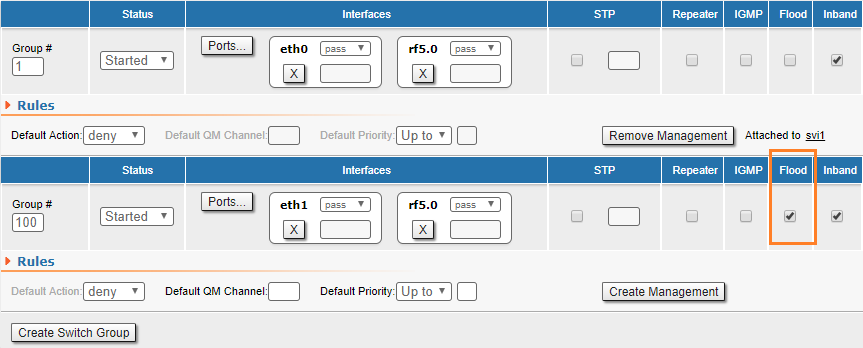Unicast-flood occurs when the unicast frame's destination MAC-address is unknown for the switch (not included in its routing table), it sends this frame to all interfaces of the network, besides the sender interface. The most common reasons of unicast-flood are:
- MAC address table overflow (a common problem in large networks);
- Hosts with ARP timers longer than the ARP cache time on switches;
- Incorrect STP settings;
- Incorrect switch groups settings (in particular, when the IDs of switch groups for the receiving and sending traffic are different).
The unicast-flood process on R5000 devices is devices is the following: if the frame's destination MAC-address is not included in the device unit's MAC switch forwarding table, then this frame is flooded to all interfaces except besides the sender interface. The distribution occurs until the device unit receives a frame with this MAC-address as the sender (i.e., the interface to which the frame was destinated to respond). After that, the R5000 device will learn: it will add this MAC address to the MAC switch forwarding table and map it with the interface from which it was received. If the R5000 device does not learn in 4 seconds, and frames still arrive, then traffic to this direction will be blocked for 4 seconds. Then the process repeats.
...
| Center |
|---|
| Scroll Title |
|---|
| title | Figure - Unicast-flood detection in switch statistics |
|---|
|  |
|
InfiNet Infinet Wireless units provide unicast-flood protection. If necessary, you can allow unlimited unicast-flood without protection filter through the switch group by setting the check box in "Basic Settings" → "MAC Switch" settings:
| Center |
|---|
| Scroll Title |
|---|
| title | Figure - How to allow unicast-flood without protection filter |
|---|
| 
|
|
R5000 units Devices react to unidirectional traffic (which is not a unicast-flood) in a similar manner. This happens, for example, in case of generating "artificial" traffic (using specialized units or software) or when the real traffic is unidirectional. In these cases, it is recommended to allow unlimited unicast-flood through the switch group without protection filter.

